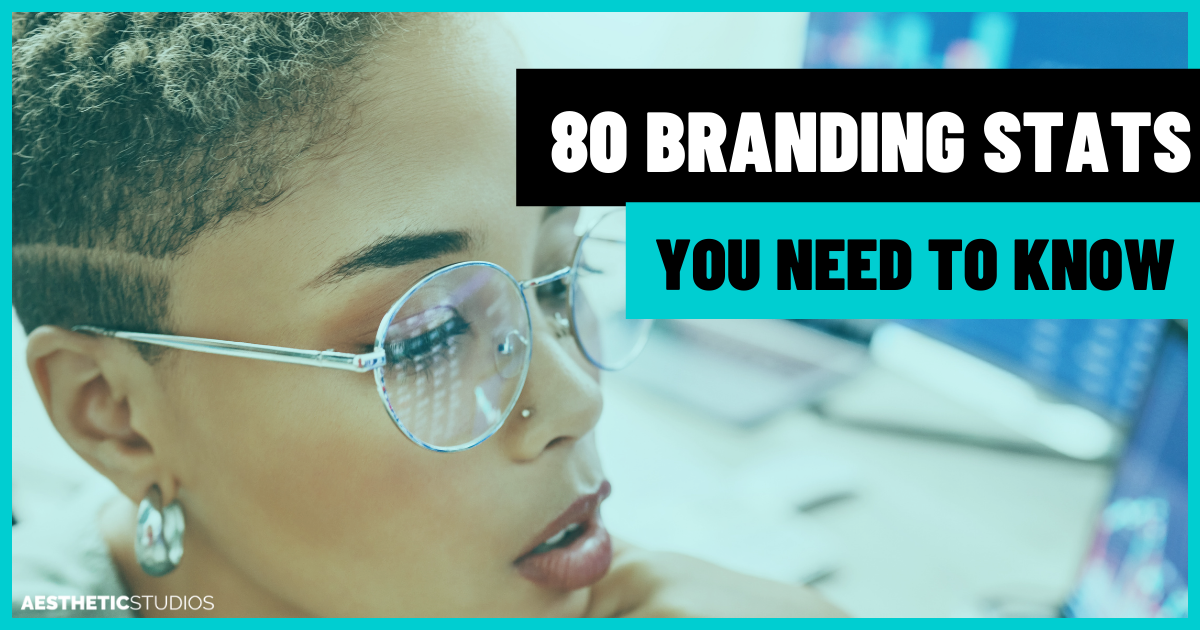If you’re a business owner or in a leadership position, you probably understand the impact branding has on the bottom line. However, with the rapid changes in technology there’s no doubt that consumer purchasing behaviour is also changing. As such it’s no surprise that the way you approach branding should also change to meet these evolving trends. The question is, what are these trends, and how do you respond effectively? However, amidst the plethora of advice and statistics available, it can be challenging to discern the key factors that truly matter.
Branding serves as a means of communication, allowing us to connect with consumers, differentiate ourselves from competitors, and establish a distinctive presence in a world teeming with competitors trying to buy your customers attention.
Building a brand is about more than designing a logo or choosing colours. It’s about telling a story – one that connects with your buyer’s and evokes an emotional response in them to take action and do business with your brand.
Branding impacts the bottom line. Period.
While commonly associated with a company’s logo or the products and services it offers, a brand identity encompasses far more.
A brand represents your company not only in the present but also in the future, shaping public perceptions and fostering communication.
As a result, numerous companies invest in developing comprehensive brand strategies and frequently undergo rebranding initiatives to ensure their businesses remain relevant and impactful.
We put together a list of branding statistics for you which will help you make more informed decisions around how to approach your branding amidst the changing landscape.
Here are 80 essential branding statistics that every entrepreneur & marketer should know:
- 80% of consumers purchase products from brands they know. (Source: Statista)
- 46% of consumers will pay more for products and services from trusted brands. (Source: Nielsen)
- 74% of the S&P 100 companies have rebranded their business in the first seven years. (Source: Crowdspring)
- 60% of consumers avoid companies with logos that have weird or unappealing designs. (Source: HubSpot)
- 90% of consumers are more likely to do business with a company that has a strong online presence. (Source: Oberlo)
- 75% of consumers believe that a company’s social media presence is an accurate reflection of its brand. (Source: Sprout Social)
- 62% of consumers are more likely to trust a company that has a blog. (Source: Convince & Convert)
- 92% of consumers say that a company’s brand is important to their purchasing decision. (Source: Crowdspring)
- 70% of consumers say that they are more likely to do business with a company that shares their values. (Source: Cone Communications)
- 57% of consumers say that they are more likely to recommend a company to others if they have a positive brand experience. (Source: Crowdspring)
Branding and Customer Loyalty
- Customers who are loyal to a brand spend 12% more than those who are not loyal. (Source: Bain & Company)
- Loyal customers are more likely to recommend a brand to others. (Source: Nielsen)
- Loyal customers are more likely to forgive a brand for mistakes. (Source: The Loyalty Effect)
- Loyal customers are more likely to repurchase from a brand. (Source: Bain & Company)
- It costs 5x more to acquire a new customer than it does to retain an existing one. (Source: Harvard Business Review)
- Customers who are loyal to a brand spend 12% more than those who are not loyal. (Source: Bain & Company)
- Loyal customers are more likely to recommend a brand to others. (Source: Nielsen)
- Loyal customers are more likely to forgive a brand for mistakes. (Source: The Loyalty Effect)
- Loyal customers are more likely to repurchase from a brand. (Source: Bain & Company)
- It costs 5x more to acquire a new customer than it does to retain an existing one. (Source: Harvard Business Review)
Branding and Employee Engagement
- Employees who are engaged with their company’s brand are more likely to be productive. (Source: Gallup)
- Employees who are engaged with their company’s brand are more likely to stay with the company. (Source: Gallup)
- Employees who are engaged with their company’s brand are more likely to be advocates for the company. (Source: Gallup)
- A study by Gallup found that companies with engaged employees have 21% higher profitability. (Source: Gallup)
- Employees who are engaged with their company’s brand are more likely to be productive. (Source: Gallup)
- Employees who are engaged with their company’s brand are more likely to stay with the company. (Source: Gallup)
- Employees who are engaged with their company’s brand are more likely to be advocates for the company. (Source: Gallup)
- A study by Gallup found that companies with engaged employees have 21% higher profitability. (Source: Gallup)
- A study by PwC found that companies with engaged employees are 25% more likely to achieve their business goals. (Source: PwC)
Branding and Social Media
- 72% of consumers use social media to research products and services before making a purchase. (Source: Statista)
- 60% of consumers are more likely to trust a company that is active on social media. (Source: Sprout Social)
- 53% of consumers have unfollowed a brand on social media because of poor customer service. (Source: Sprout Social)
- A study by Sprout Social found that companies with a strong social media presence generate 20% more leads than those with a weak social media presence. (Source: Sprout Social)
- 72% of consumers use social media to research products and services before making a purchase. (Source: Statista)
- 60% of consumers are more likely to trust a company that is active on social media. (Source: Sprout Social)
- 53% of consumers have unfollowed a brand on social media because of poor customer service. (Source: Sprout Social)
- A study by Sprout Social found that companies with a strong social media presence generate 20% more leads than those with a weak social media presence. (Source: Sprout Social)
- A study by Nielsen found that 70% of consumers trust the reviews they see on social media. (Source: Nielsen)
Branding and the Bottom Line
- A study by Nielsen found that 66% of consumers are willing to pay more for a product from a trusted brand. (Source: Nielsen)
- A study by McKinsey found that companies with strong brands have a 20% premium on their stock price. (Source: McKinsey)
- A study by Harvard Business Review found that companies with strong brands are 75% more likely to survive a recession. (Source: Harvard Business Review)
- A study by the Corporate Executive Board found that companies with strong brands have a 12% higher return on equity. (Source: Corporate Executive Board)
- A study by Nielsen found that 66% of consumers are willing to pay more for a product from a trusted brand. (Source: Nielsen)
- A study by McKinsey found that companies with strong brands have a 20% premium on their stock price. (Source: McKinsey)
- A study by Harvard Business Review found that companies with strong brands are 75% more likely to survive a recession. (Source: Harvard Business Review)
- A study by the Corporate Executive Board found that companies with strong brands have a 12% higher return on equity. (Source: Corporate Executive Board)
- **A study by Forrester found that companies with strong brands experience 20% faster revenue
Branding and Other Factors
- The average person sees 10,000 to 100,000 brand impressions per day. (Source: Nielsen)
- It takes 50 milliseconds for people to form an opinion about a website. (Source: Kissmetrics)
- Two-thirds of brands say brand consistency has contributed to revenue growths of at least 10 percent. (Source: PwC)
- Three in four customers say transparent communication from brands has become more important after the pandemic. (Source: Salesforce)
- 88 percent of consumers say authenticity is important when deciding what brands they like and support. (Source: Nielsen)
- 46 percent of surveyed consumers say they would pay more for brands they trust. (Source: Forbes)
- Using a signature colour can increase brand recognition by 80 percent. (Source: HubSpot)
- It takes about 10 seconds for people to scan a webpage, so it’s important to make sure your brand is front and centre. (Source: Baymard Institute)
- 70% of consumers say that they are more likely to buy from a company that has a good sense of humour. (Source: Forbes)
- 60% of consumers say that they are more likely to buy from a company that is environmentally friendly. (Source: Nielsen)
- 55% of consumers say that they are more likely to buy from a company that is socially responsible. (Source: Cone Communications)
- 45% of consumers say that they are more likely to buy from a company that is transparent about its operations. (Source: Edelman)
- 35% of consumers say that they are more likely to buy from a company that is innovative. (Source: Forbes)
- 25% of consumers say that they are more likely to buy from a company that is personalised. (Source: McKinsey)
Branding and the Future
- Branding is not just about creating a logo and tagline. It’s also about creating a consistent experience across all touchpoints. (Source: Forbes)
- Branding is not just about what you say about your company. It’s also about what your customers say about your company. (Source: Nielsen)
- Branding is not something you do once and then forget about. It’s something you need to constantly work on and improve. (Source: HubSpot)
- Branding is not just about the present. It’s also about the future. You need to create a brand that will be relevant and appealing in the years to come. (Source: Forbes)
- The future of branding is personalization. Brands that can personalise their experiences for each individual customer will have a significant advantage. (Source: McKinsey)
- The future of branding is authenticity. Brands that are authentic and transparent will be more trusted and respected by consumers. (Source: Edelman)
- The future of branding is social. Brands that are active and engaged on social media will be more visible and accessible to consumers. (Source: Sprout Social)
- The future of branding is data-driven. Brands that use data to understand their customers and target their marketing will be more successful. (Source: Forbes)
- The future of branding is global. Brands that can reach and connect with consumers around the world will be more successful. (Source: Statista)
- 70% of consumers are more likely to trust a company that has a clear and concise mission statement. (Source: HubSpot)
- 80% of consumers are more likely to buy from a company that has a strong visual identity. (Source: Forbes)
- 65% of consumers say that they are more likely to buy from a company that shares their values. (Source: Cone Communications)
- 58% of consumers say that they are more likely to recommend a company to others if they have a positive brand experience. (Source: HubSpot)
- It takes 50 milliseconds for people to form an opinion about a website. (Source: Kissmetrics)
- Two-thirds of brands say brand consistency has contributed to revenue growths of at least 10 percent. (Source: PwC)
- 95% of consumers say that a company’s brand is a key factor in their decision to purchase a product or service. (Source: Crowdspring)
- 84% of consumers say that they are more likely to do business with a company that has a positive online reputation. (Source: Nielsen)
- 72% of consumers say that they are more likely to trust a company that has a strong visual identity. (Source: Sprout Social)
- 65% of consumers say that they are more likely to buy from a company that shares their values. (Source: Cone Communication
Building a brand requires a significant investment, both in terms of financial resources and effort. By paying attention to the following statistics, entrepreneurs and marketers can make more informed decisions that will shape the perception of their brand. Having an understanding of consumer preferences regarding colours and social media usage can enable entrepreneurs to focus their efforts on the channels that resonate with their target audience.
These insights will assist you in initiating the process of building your brand or inspire you to explore ways to revitalise your current brand. Remember, it is never too late to make a meaningful impact!
So, what’s next?
Remember, branding can increase your bottom line. But it takes time, investment, and an understanding of what’s currently trending in the branding space.
If you want to take your branding to the next level, it might be time to consider using colour psychology. We wrote an article about how to use colour psychology to increase your bottom line here.



